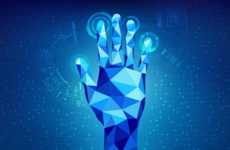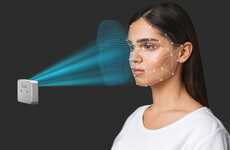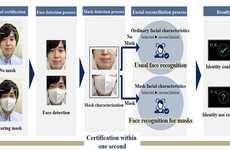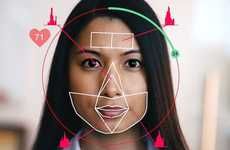
The Amazon Rekognition System is Able to Identify Fear in Faces
Daniel Johnson — August 15, 2019 — Tech
References: engadget
Amazon has stated that its Amazon Rekognition system has the ability to determine if people are scared. This makes fear the eighth human emotion that Amazon Rekognition is able to differentiate. The other emotions that the system can recognize include happiness, sadness, anger, surprise, disgust, calmness as well as confusion. The company also indicates that its facial recognition system is able to determine a person's age range. The company states that the system can accurately obtain a range, "across most age groups."
Notably, Amazon has been selling the Rekognition system to law enforcement agencies. The system and its customer base have drawn controversy, however Amazon's shareholders have voted to continue the sale of its fear-detecting facial recognition system.
Notably, Amazon has been selling the Rekognition system to law enforcement agencies. The system and its customer base have drawn controversy, however Amazon's shareholders have voted to continue the sale of its fear-detecting facial recognition system.
Trend Themes
1. Facial Recognition Emotion Detection - There is an opportunity for disruptive innovation in developing more accurate and nuanced facial recognition systems that can detect a wider range of human emotions beyond the current eight.
2. Ethical Considerations in Facial Recognition - There is an opportunity for disruptive innovation in developing ethical guidelines around the use of facial recognition technology, particularly in law enforcement and surveillance applications.
3. Facial Recognition Age Detection - There is an opportunity for disruptive innovation in improving the accuracy of facial recognition systems in determining a person's age range, particularly in cases where age identification is critical, such as verifying identity in financial and healthcare contexts.
Industry Implications
1. Law Enforcement and Surveillance - There is an opportunity for disruptive innovation in developing new and more effective tools for law enforcement and surveillance agencies that can provide more accurate and nuanced facial recognition capabilities while still adhering to ethical and legal considerations.
2. Healthcare - There is an opportunity for disruptive innovation in developing facial recognition systems that can accurately determine a person's age range and other identifying characteristics for use in verifying patient identities in healthcare settings, which can improve patient safety and reduce errors in medical treatment.
3. Financial Services - There is an opportunity for disruptive innovation in developing facial recognition systems that can accurately determine a person's age range and other identifying characteristics for use in verifying identities for financial transactions, which can improve security and reduce fraudulent activity.
2.1
Score
Popularity
Activity
Freshness























